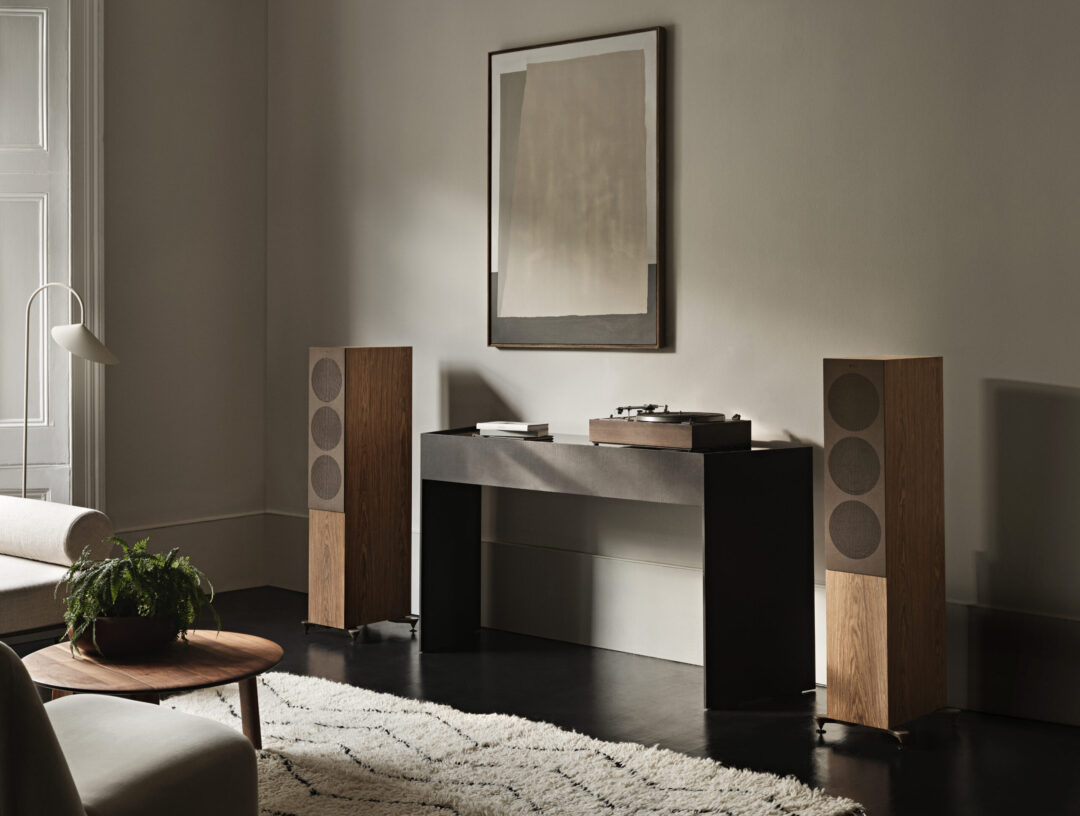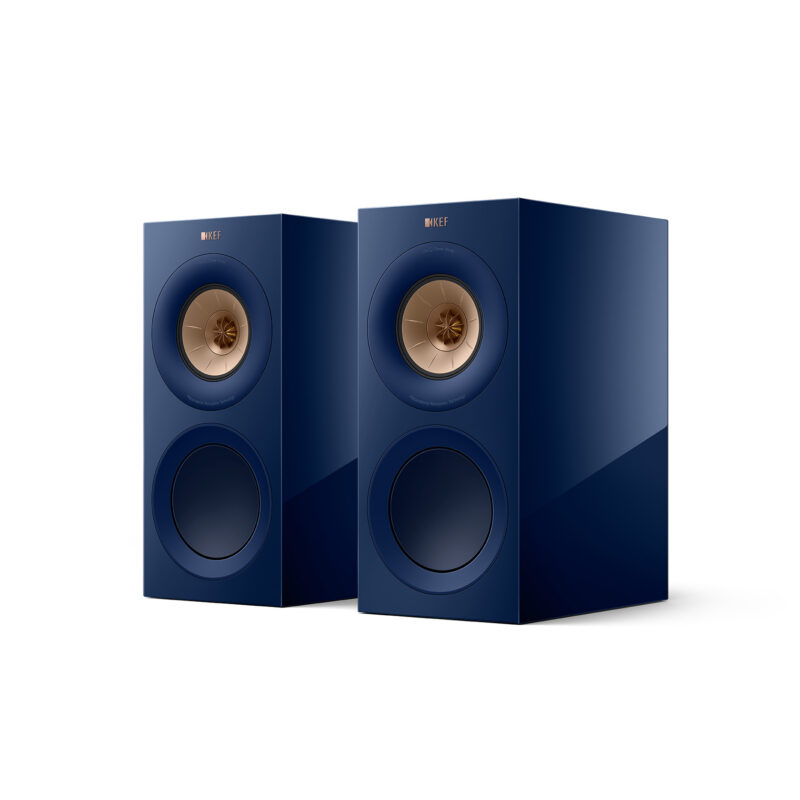I remember wondering about the claim of how much better the sound would be when KEF first introduced Metamaterial Absorption Technology (MAT). For me, the press release sounded like so many other press releases from loudspeaker manufacturers. Full of praise about how much better the new version is.
So, guided by experience, I waited to judge until I had heard what KEF’s supposedly revolutionary sound enhancement, MAT, could achieve.
Usually it’s a matter of major or minor nuances. A new surround and a more powerful magnet on the woofer, for example, can produce a tighter, more potent bass. But you don’t lose your composure because the bass is a little tighter. But I almost did in this case, though. Because who would have thought that something so seemingly insignificantcould produce such a huge sonic improvement. This wasn’t just about nuance, but something else entirely.
The way the soundscape opened up told me that this was really something new. The focus in the midrange was exceptionally good. There was a coherence to the soundscape that could hardly be bettered. Until KEF launched the Blade using the same technique.
It was even better than the Reference 5 Meta, which had given us a truly unique musical experience.
Since then KEF has introduced MAT in several speakers, including the compact LS50 Meta. And now it’s the turn of the R Series. Here represented by the R7 Meta, as the speakers with MAT are called.

12th generation
The Meta, or MAT, is a seemingly unremarkable round plate placed behind KEF’s coaxial speaker unit, which they call the Uni-Q, here with the MAT integrated.
The R5 Meta uses KEF’s 12th generation Uni-Q unit. With a new suspension, a new voice coil system and improved damping of resonances in the region between the tweeter and the midrange diaphragm. The unit features the same Flexible Decoupling Chassis – the mechanical coupling to the cabinet found in the Reference and Blade models.
As in the Reference Meta, the crossover has been improved and upgraded according to KEF. At the same time, the cabinet construction is stiffer and the speakers come with heavy-duty metal feet for spikes that screw into the underside of the cabinet.

Metamaterial Absorption Technology
MAT, the round plate behind the Uni-Q unit, has an intricate maze pattern milled into one side of the plate. The pattern is shaped to absorb unwanted frequencies and remove unwanted sound from the back of the unit.
KEF describes it as an acoustic black hole. As much as 99 percent of unwanted frequencies in the range 620 Hz to 40 kHz can be removed, resulting in, among other things, a 40 percent more linear frequency response.

R models with Meta
MAT is available on all models in the new R Series. From the flagship R11 Meta to the compact R3 Meta. The R7 Meta, which we test here, is the second largest in the range, but there’s also an R5 Meta in a slimmer cabinet, two centre speakers called the R6 and R2 Meta, and the R8 Meta, which is a pair of Dolby Atmos speakers for home cinema.
The flagship R11 Meta and R7 Meta use the same units, but where the R11 Meta has four 16.5cm woofers in each speaker, the R7 Meta has a pair of the same units in a more compact floorstander cabinet. Like the others, they come with full-coverage fabric-covered fronts that attach magnetically to the cabinet.
The R7 Meta has two large bass reflex ports on the rear, but unlike the Reference Meta, the ports don’t come in two different lengths, so you can attenuate the bass by swapping the rear tubes.
Exclusive cabinet colours
As always, the speakers are available in black or white lacquer with the drivers in the same colour. You can also choose a pair in satin walnut veneer with copper-coloured cones. The floorstanding R7 Meta is also available in a titanium grey lacquer, similar to Porsche Agate Grey. This model has titanium grey base units and and a red lacquered Uni-Q unit. The compact R3 Meta is also available in a deep blue paint, not unlike BMW’s Portimao blue, with a copper-coloured Uni-Q unit.

Mega Meta
Even with the experience of testing the other KEF speakers with the Meta, I was amazed at the clarity, openness and precise focus the R7 Meta delivered in the test room.
After a week of playback, I connected a Roksan Atessa power amplifier. The sleek and well-playing power amp with 80 potent watts under the steel-gray cabinet drove the KEF speakers with ease. It had no problems with 88 dB sensitivity and an impedance down to 3 ohms. The much more powerful McIntosh MA9500 didn’t let up either, blowing Bugge Wesseltoft’s New Conception of Jazz out of the room and far into the parking lot.
Even then, the dynamics were in complete control, and the two bass woofers in each speaker passed 40 Hz in the bass with playful ease. In our test room, bass reproduction was effective until about 35 Hz, when it dropped off sharply, and after that there wasn’t much energy left in the bass.
That’s perhaps the only complaint we have about the R7 Meta. But the bass quality, on the other hand, is nothing to write home about. The New Conception of Jazz doesn’t exactly lack bass dynamics, and the KEF speakers showed their qualities in the lower octaves with a completely immaculate bass reproduction. Bass was reproduced with controlled authority, even on Steve Winwood and Santana’s version of A Whiter Shade of Pale. Here you can feel the drums in the midrange, but always with full control, even when I asked the MA9500 to fire up more under the speakers.

The relatively slim speakers deliver a rare big sound image with great sonic richness and fullness. The aforementioned New Conception of Jazz is packed with quirky and sudden tones and arrangements that take unexpected turns. The speakers reproduce it all with an unwavering focus and effortlessness that I remember from the Reference 5 Meta,
Piano sound is notoriously difficult to reproduce correctly and with all its dynamics and nuances. The KEF speakers make Leif Ove Andsnes’ Horizon piano interpretations of composers as diverse as Scriabin, Sibelius and Chopin fly out of the speakers on wings of silk.
There are plenty of airy timbres here, floating in the vast three-dimensional space spanned by the speakers. You can immediately hear how different Keith Jarrett’s piano recording sounds in the Cologne concert. Here the instrument sounds cooler, at times almost out of tune, and you can hear this clearly through the KEF speakers, which reveal small nuances in the music with the greatest of ease.
It’s tempting to call them the Reference 5 Meta light, but the R7 Meta stands well on its own, costs less, is easier to place in the home – and plays with the same outstanding sound quality as the larger models in the Reference range. The bass doesn’t go quite as deep, there’s not quite the same depth to the soundstage, and they don’t play quite as loud. But the differences in sound quality are not as great as the price difference.
Competitors
The larger Audiovector QR7s, for example, play rock with greater authority, but don’t have the same refinement or neutral midrange as the R7 Meta. We haven’t yet tested the new Bowers & Wilkins 702 S3, but its predecessor lacks the openness and dynamics of KEF speakers. The Sonus faber Sonetto V is perhaps the closest to the KEF speakers, but they can sound a little drier and more subdued, especially when playing loud.
Conclusion
There’s no denying that KEF’s meta-fication of the speakers has pushed the price up into the upper air. This is not only due to the Meta or the improved cabinet, but also the general price increase on everything from parts to shipping. It doesn’t matter for the R7 Meta’s qualities, because they are so much better than their predecessors that we are really talking about a completely different speaker. They are up there in a completely different class than their predecessor. The R7 Meta is a speaker that is so thoroughly good at everything that it can be considered a reference in this class.

We think
Perfect balance with very good dynamics from a transparent and open sound stage with very good resolution. Easy to drive, relatively easy to accommodate. Considerable price increase compared to its predecessor. Limited deep bass.
5000 €
Specifications
- Type: Three-way, floor-standing with bass reflex
- Woofer: 2 x 16.5 cm hybrid aluminium diaphragm
- Midrange: 12.5 cm aluminum
- Tweeter: 2.5 cm aluminium w. MAT
- Sensitivity: 88 dB
- Impedance: 4 Ohm
- Frequency range: 33 Hz – 50 kHz -6 dB
- Crossover frequency: 400 Hz, 2400 Hz
- Max. load: 250 W
- Recommended amplifier power: 15-250 W
- Dimensions/weight (cm/kg): 110 x 31 x 38 / 29.3
- Colours: Black, white, walnut, titanium grey
- Web: uk.kef.com









so no single photo of the setup or the speakers other than the official marketing photos?